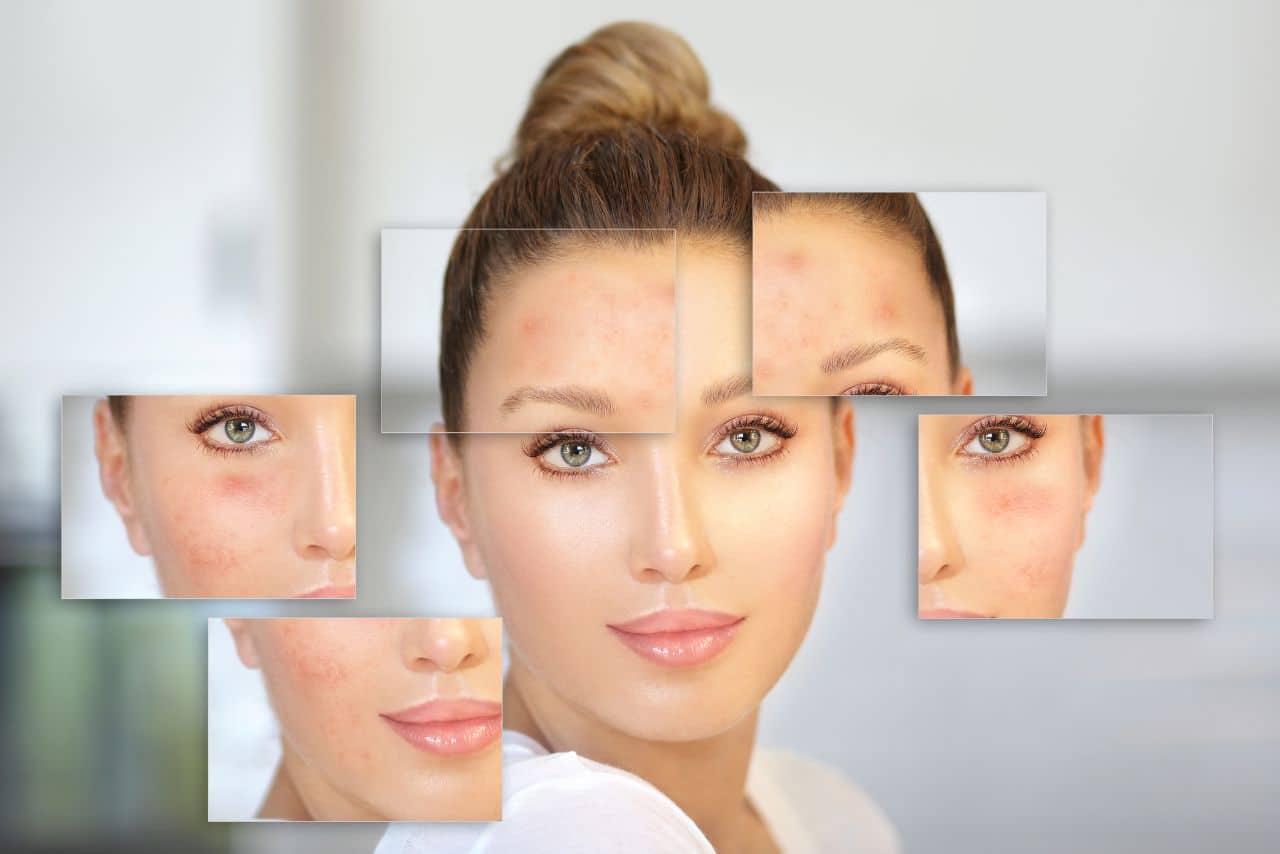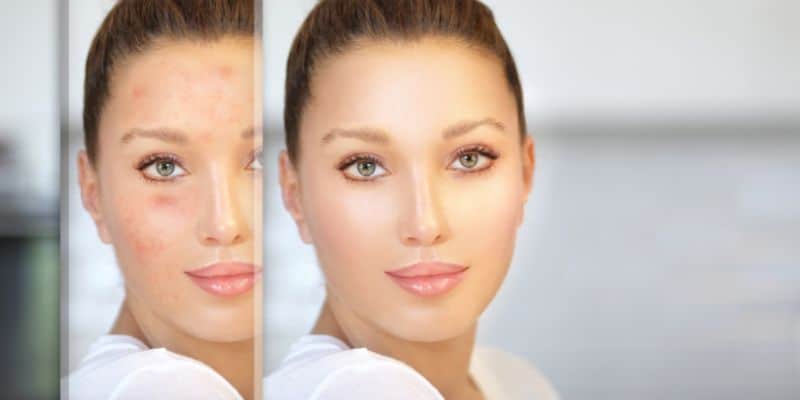
Dermal fillers are a method of soft tissue augmentation that are often used as an anti-aging treatment. Primarily, dermal filler injections are able to add mass within the skin, effectively plumping the skin, augmenting areas that require increased volume, and smoothing out lines and wrinkles. This is also effective for improving the appearance of acne scars. Acne is an inflammatory disease that is very common during puberty, though many people also suffer from it into adulthood. Unfortunately, scars are often a legacy left behind even after people are able to get their acne breakouts under control.
Is it effective and safe for acne scars?
Dermal fillers are a safe and approved medical device for treatment of age-related skin imperfections such as wrinkle correction and volume restoration. Many fillers are also approved for the treatment of acne scars.
There are 2 different types of acne scars:
atrophic and hypertrophic. Atrophic scars are then classified into icepick scars, which are deep and narrow, rolling scars, which are larger indentations, and boxcar scars, which are depressions that look similar to chicken pox scars. Hypertrophic scars and acne keloids are both considered hypertrophic varieties.
How to get rid of acne and acne scars?
The first step in being able to properly treat acne and acne scars is to control inflammation. By reducing inflammation, the chance of scars developing is reduced. There are a few different techniques that can help treat acne scars, including chemical peeling, microneedling, and laser therapy for atrophic scars, and cryotherapy, corticosteroid injections, or surgery for hypertrophic scars. However, while these may reduce the appearance, they cannot return the skin to being scar-free. Dermal fillers are also a great way to treat acne scars, particularly rolling scars and boxcar scars, as fillers work by filling depressions in the skin.
Best dermal filler for acne scars?
The best dermal filler for acne scars will vary by patient, as everyone’s particular needs will differ. An experienced dermatologist will be able to help in this assessment. However, some of the most popular dermal fillers to treat scarring from acne are hyaluronic acid-based fillers like Belotero, Juvederm, and Restylane.
Cost
Many patients might ask:are facial fillers worth the cost to treat acne scarring? This depends on a number of factors, chiefly, how important it is to the patient to get rid of the scars. The patient will be getting results with little recovery time, and a safe, noninvasive procedure. However, if receiving the more popular hyaluronic acid-based fillers, then treatment is not permanent, and injections will have to be once or twice a year depending on the filler used. With that in mind, 1 treatment session could cost anywhere between $700 and $900, depending on the filler used.
Process
The very first step in the process is to have a consultation with a dermatologist or otherwise skilled and licensed health-care professional. For the injection procedure, an anesthetic may first be applied to the skin (if there isn’t already a numbing agent in the dermal filler ingredients) for increased comfort. The doctor will then inject the filler slowly using a very fine needle, filling in all the scars that will respond to treatment. As results are instantly noticeable, the doctor will likely have the patient look in a mirror and see if there are any prominent or worrisome scars that were missed during treatment.
Results
Though some improvements should be immediately apparent after injection, it is important to remember that some of the most popular dermal fillers for this treatment are only temporary, meaning injections will have to be performed regularly. However, depending on the filler used, results may last anywhere from a few months to 2 years. For optimal results, particularly for icepick scars, hypertrophic scars, and acne keloids, receiving dermal fillers in combination with other treatments such as chemical peels or laser treatment is recommended.
Precautions
Although dermal filler injections are very safe, there are some precautions patients should observe. First of all, make sure the person administering the injections is an experienced and licensed health-care professional. Second, it is important to get the acne under control prior to injections, as injections will not be able to be administered in areas of the face that are inflamed.
Effectiveness
Dermal fillers are safe, and many patients have found treatment to be very effective. The effects should be seen immediately following injection, and the ingredients are incredibly biocompatible so there is a very low risk of complications.
Side effects
Despite having a very good safety profile, there are some mild side effects associated with treatment with dermal fillers. These reactions are rare and will typically appear immediately following or shortly after treatment and will resolve themselves without intervention within a few days to a week. These reactions include:
- Bruising, redness, and inflammation at the injection site.
- Tiny bumps under the skin
Classification
There are multiple classifications of dermal fillers available: temporary, semi-permanent, and permanent.
-
- Temporary – these fillers are biodegradable, which means the body breaks down the materials over a period of time. The ingredients are usually hyaluronic acid or collagen, and injection with these fillers will not only add volume but may also help stimulate collagen production.
- Semi-permanent – these fillers also break down after injection, but at a slower pace. They are usually made of biostimulatory materials, such as poly-L-lactic acid or calcium hydroxylapatite.
- Permanent – as the name suggests, these fillers are the longest lasting, and may even last a lifetime. They are made of materials that are not biodegradable, such as silicone.
Types of scars treated with dermal fillers
There is more than one type of acne scar, and different levels of effectiveness will be observed depending on the type of scar. Dermal fillers are effective treatment:
- For pick scars
- For indent scars
- For atrophic scars
- For deep acne scars
- For boxcar-shaped scars
- For rolling scars
- For hypertrophic or keloid scars
Treatment
If you have ever asked yourself the following questions:
- How to heal your skin that is damaged by acne scars?
- Will my acne scars go away?
- How to remove holes in face caused by acne scars?
The answer to all of these may be dermal fillers! A licensed dermatologist or health-care professional will be able to help you determine whether dermal filler treatments will help you achieve your goal of getting rid of your acne scars.
If you’re still asking yourself: what are the benefits of dermal filler treatments? Well that’s easy. Treatment is quick, non-surgical, minimally-invasive, and can give you immediate results without any recovery time.
How old do you have to be to get dermal fillers?
Patients need to be over the age of 18, but this may vary depending on the laws in your area, in order to receive treatment with dermal fillers for acne scars. Additionally, patients who are pregnant or breastfeeding, or who have an immune disorder should not receive dermal filler injections.
How much time does it take for the marks to fade after injection?
The scar marks will look better immediately after the first injection and results can last for as long as 2 years, depending on the filler used. Some fillers will also show continued improvement of the marks for a few months following treatment.
Can dermal fillers help to remove old scars?
Yes, dermal filler can help remove old acne scars and any scars left behind from acne, so long as they are not inflamed at the time injection treatments are sought. Dermal fillers plump up the indentations in the skin caused by acne, decreasing their appearance.
Conclusion
Dermal fillers are a great option for treatment for acne scars and can help to instantly improve the look of marks and scars that may be affecting your self-esteem. Speak to a dermatologist or health-care professional about whether or not dermal fillers may be able to help treat your acne scars.

About the Author: Doris Dickson is a specialist writer for Health Supplies Plus, focusing on the aesthetic medicine industry. She diligently researches cosmetic treatments and products to provide clear, concise information relevant to licensed medical professionals. Her work supports Health Supplies Plus’s commitment to being a reliable informational resource and trusted supplier for the aesthetic community.
Disclaimer: The content provided in this article is intended for informational purposes only and is directed towards licensed medical professionals. It is not intended to be a substitute for professional medical advice, diagnosis, or treatment, nor does it constitute an endorsement of any specific product or technique. Practitioners must rely on their own professional judgment, clinical experience, and knowledge of patient needs, and should always consult the full product prescribing information and relevant clinical guidelines before use. Health Supplies Plus does not provide medical advice.

